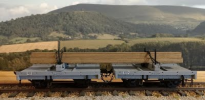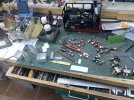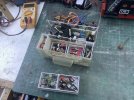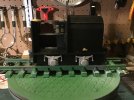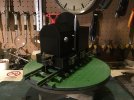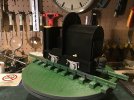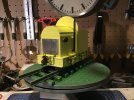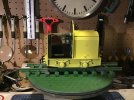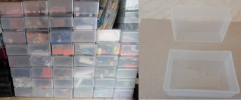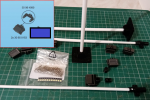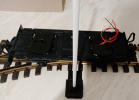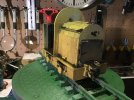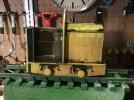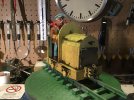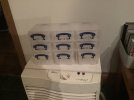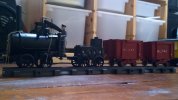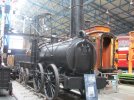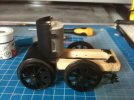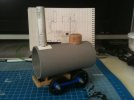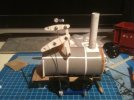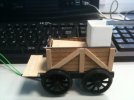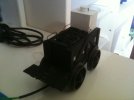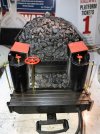I'll try my best, it was built quite a while ago now. I did have a build thread back in the day, but the pages don't appear to be loading at the moment.
It all started after seeing the Agenoria displayed at the NRM, I think a little over 10 years ago now. It was my first serious, planned out attempt at a scratch build. So it was a little basic, but hopefully I ended up with something a little reminiscent of the prototype.
View attachment 277055
The base of the build was one of those cheap 3v motor/worm drive combos. The shaft for the driven gear just so happens to fit exactly into a set of LGB wheels. A wooden chassis was built into the gear box and the axles supported in acrylic bearings made on my school's laser cutter. An off cut of waste pipe was used for a boiler, the dome is the end of an old broom and the boiler front is a disc of MDF sanded into a round.
View attachment 277057 View attachment 277056 View attachment 277054
The foot plate is another laser cut piece of MDF, planked with coffee stirrers. Other than the pen barrel for the funnel, plasticard was used for everything else. Rivet detail was embossed from the rear of the strips using the point of a compass. I had to ditch the 4 wheel drive as I couldn't get the drive wheels to stop slipping on the axle. The cylinders are a piece of plasticard tube with a disc on each end. a hole was drilled into the top one and another tube inserted to support the piston rod.
The tender is pretty similar, the chassis is square wooden section, with laser cut sides. There's a single AA battery in the tender to power it, accessed by a removable coal load. The whole thing is controlled by a DPDT switch mounted between the tender chassis rails.
View attachment 277058 View attachment 277059
The drive rods are all quite slack and I've had to tweak it a lot to get it to run consistently. It did manage a full lap of the line a Mbiff's last open day though, it just took a veeerryy long time. I've been studying it a bit lately, thinking about how I could improve it and add some more detail. At the moment though I'm tempted to leave it as it is, to have to compare back to

